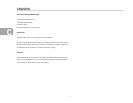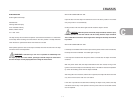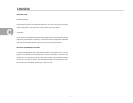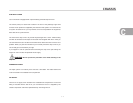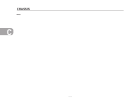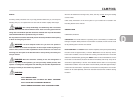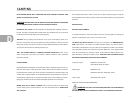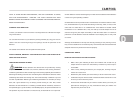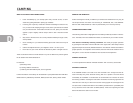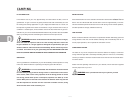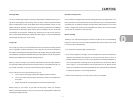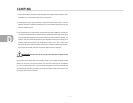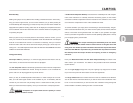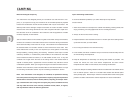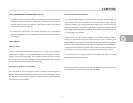
D
CAMPING
D - 4
WHAT TO DO WHEN THE ALARM SOUNDS:
• Leave immediately by your escape plan. Every second counts, so don't
waste time getting dressed or picking up valuables.
• In leaving, don't open any inside door without first feeling its surface. If hot,
or if you see smoke seeping through cracks, don't open that door! Instead
use your alternate exit. If the inside of the door is cool, place your shoulder
against it, open it slightly and be ready to slam it shut if heat and smoke
rush in.
• Stay close to the floor if the air is smoky. Breathe shallowly through a cloth,
wet if possible.
• Once outside go to your selected meeting place and make sure everyone
is there.
• Call the fire department from your neighbor’s home - not from yours!
• Don't return to your home until the fire officials say that it is all right to do so.
There are situations where a smoke detector may not be effective to protect against
fire as stated in the NFPA standards 72.
For instance:
a) Smoking in bed;
b) Leaving children home alone.
c) Cleaning with flammable liquids, such as gasoline.
Further information on fire safety can be obtained in a pamphlet titled “IN A FIRE SEC-
ONDS COUNT” published by the NFPA, Batterymarch Park, Quincy, Mass. 02269.
SERVICE AND WARRANTY
If after reviewing this manual you feel that your smoke alarm is defective in any way, do
not tamper with the unit. Return it for servicing to: FYRNETICS, INC., 1055 STEVEN-
SON CT./STE 102W, ROSELLE, IL 60172. (See Warranty for in-warranty returns).
CARBON MONOXIDE ALARM
The following information is highlights from the folder provided by the alarm manufac-
turer. The folder, with more detailed information, is contained in your Owners’ Packet.
Test detector immediately following installation and weekly for proper operation
by pushing the test button until the YELLOW L.E.D. lights and a short beep is heard
(approximately three seconds). Release the button. The detector will then test itself for
proper operation. At completion of the self-test, the alarm will sound and both L.E.D.s
will light for 3/4 of a second. The detector then resumes normal operation.
NORMAL OPERATION
In normal operation the detector will flash the RED L.E.D. once every 30 seconds.
WARNING CONDITION
If the COSTAR senses a low level of CO The YELLOW L.E.D. will light and the de-
tector will beep every three seconds warning that CO is present. The area should
immediately be ventilated. A concentration of 60 PPM within 67 minutes will cause
the warning condition. Pushing the test button will silence the warning signal but the
YELLOW L.E.D. will stay on. After two hours the warning signal will sound again if the
CO source has not been eliminated. If the condition persists there is a possibility that
it may cause the unit to enter alarm condition (below). If this occurs pushing the reset
button will silence the alarm for 30 minutes.



